Space landing
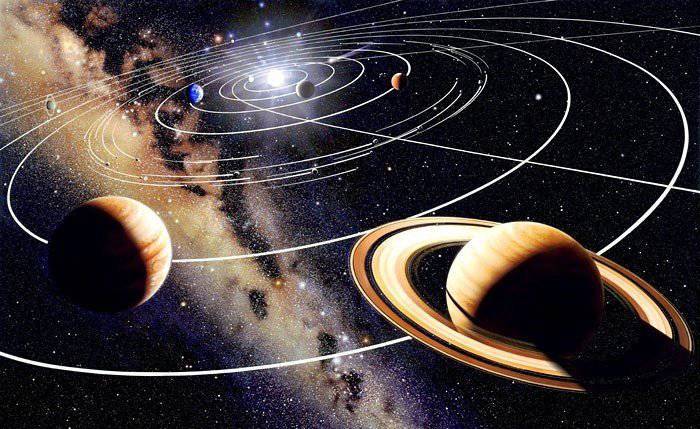
Venus: Welcome to Hell!
"The planet Venus is surrounded by a noble airy atmosphere, such (if only not more), which is poured around our globe of the earth" ... in 1761, M.V. Lomonosov found a halo around the disk of the planet and, in contrast to enlightened European scientists, made a completely correct conclusion.
Exactly through 300 years, 12 February 1961, from Baikonur, the Lightning rocket rose from the Baikonur to the cold night sky, carrying a small man-made miracle, designed to explore the infinite Cosmos, further away from Earth. A few hours later, the automatic interplanetary station (AMC) "Venus-1" lay down the course towards the Morning Star. Alas, the first pancake was a lump - the connection with the AMC was lost and the scientific program could not be completed.
In 1962, the Mariner 2 station flashed past Venus, confirming that Venus slowly rotates around its axis in the other direction: from east to west, and not like the rest of the planets from west to east. "Venusian night" lasts for 58 earth days. Venus does not have a magnetic “umbrella” to protect against hard cosmic radiation, and the planet’s atmosphere is extremely hot — perhaps the perfect place for Hell.
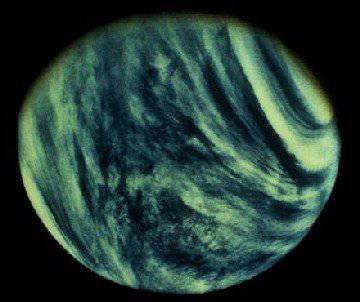
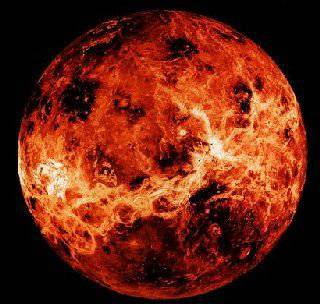
The next few years, Soviet and American stations repeatedly studied the environs of a distant planet with a flying trajectory, and finally, in 1966, the Soviet interplanetary station Venus-3 pierced the Morning Star purple clouds in a suicide peak and first reached its surface, delivering the USSR pennant to Venus.
In June, 1967, the Soviet Union organized a new expedition to Venus - a heat-resistant apparatus had to make a soft landing and conduct research on the surface of the planet. The multi-month flight went according to plan - “Venus-4” successfully braked in the atmosphere of Venus, the parachute opened, the telemetry data flow started ... The descent vehicle was crushed at an altitude of 28 km - the pressure of the Venusian atmosphere exceeded the calculated 20 atmospheres. The model of the atmosphere was completely revised - according to the data obtained from Venus-4, the pressure at the surface should reach 90-100 Earth's atmosphere (as at depth 1 a kilometer under water - even heavy diving equipment will not save a person)!
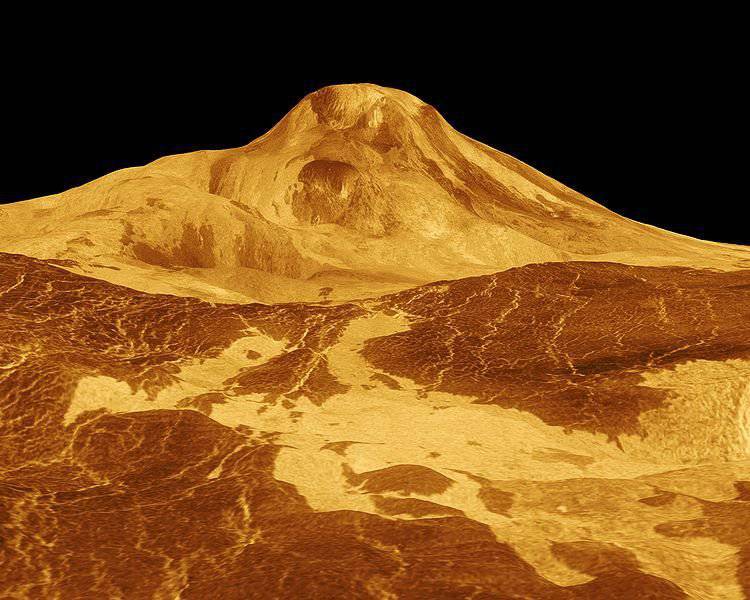
Over the next 10 years, an entire landing battalion landed on the surface of Venus - the 8 interplanetary stations of the Venus series. One of the last AMS - Venus-13, worked on the 127 surface for minutes in the environment with a temperature of 457 ° C and at a pressure of 93 atm. During this time, the station transmitted to the Earth color panoramic photographs of the Venusian landscape and an exclusive recording of sounds from another planet. There are no groans of tormented sinners on it, but distant peals of thunder are heard.
The last time the Soviet satellites visited Venus in 1984 year - two devices of the “Vega” series studied the Venusian atmosphere with the help of balloons. Amazing airships drifted for two days at an altitude of 50 kilometers, enjoying the beautiful weather (0,5 atm pressure, 40 ° C temperature) and a magnificent view of lightning flashes on the night side of the planet. Then they were blown away and plunged into the fiery abyss.
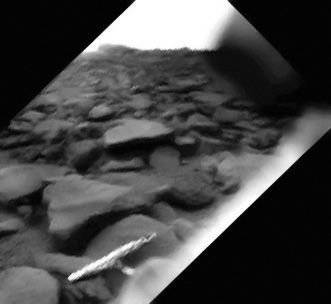
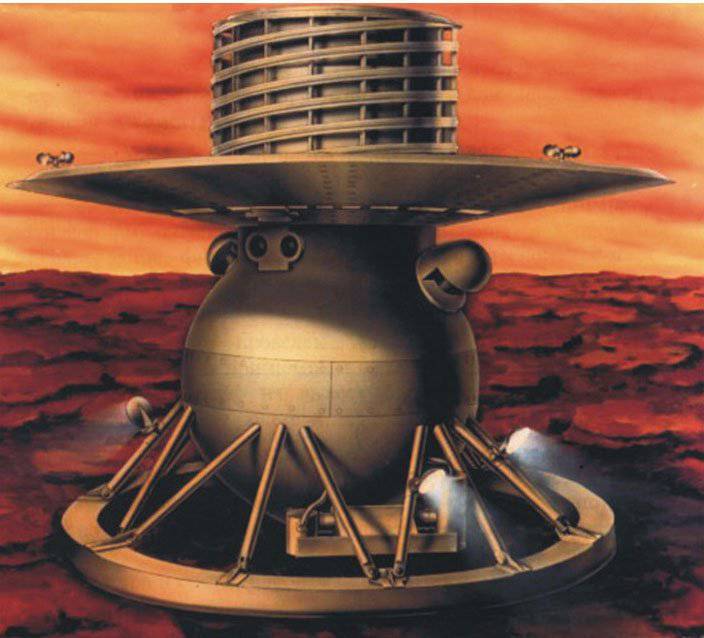
NASA took over the baton from Venus research - American researchers preferred not to go into the hellish atmosphere of the Morning Star while studying Venus from orbit. The Magellan probe was especially notable - from 1990 to 1994 the year he conducted a detailed mapping of the entire surface of the planet.
Bathing is canceled. Water temperature minus 180 ° С.
In August, a terrible threat loomed over the Earth 1999 - a Cassini probe launched to Saturn two years ago was launched near our planet at a speed of 19 km / s. Like any apparatus for the study of deep space, Cassini gained the necessary speed due to gravitational maneuvers - the probe first flew to Venus, from where he received a powerful accelerating impulse, returned to Earth, received another impulse from his home planet and went to Jupiter. Finally, in 2004, Cassini turned into an artificial satellite of Saturn, practically without turning on the engine for the entire duration of its long journey.
The space balancing act caused a storm of protest in the “green” environment: after all, an error in calculations of a thousandth of a percent could lead to a catastrophe. A speeding probe with a mass of about 6 tons, like a fiery meteorite, would crash into the surface of the Earth, and the presence of kg of plutonium on board the 33 was particularly alarming. But everything went smoothly - “Cassini” flew over the Earth at an altitude of 1200 km with an accuracy of up to a hundred meters.
Over the past 8 years, Cassini has thoroughly investigated the system of rings and moons of Saturn. The mission was extended to 2017, while the most exotic versions of the further use of the probe were considered - from Uranus and Neptune research to a collision with Mercury ... alas, among the researchers, the most sensible suggestion to continue the study of Saturn won.
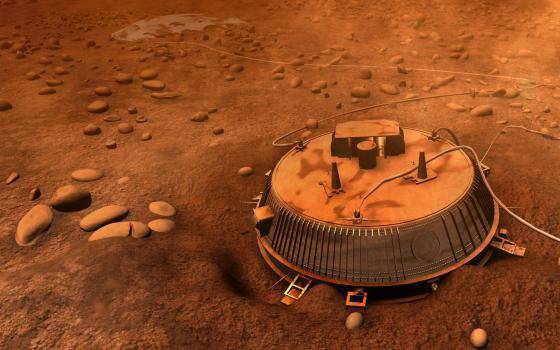
One of the main issues of the program was the enchanting landing of the Huygens probe on Saturn’s Titan satellite. This celestial body has long attracted scientists - even during the Pioneer and Voyager missions, it was revealed that Saturn’s largest satellite (2 times the size of the Moon) has a powerful atmosphere with a high content of organic matter. Of course, Titan is too far from the Sun, but ... suddenly there are extraterrestrial life forms on it?
AMC "Cassini" separated a small "pill" and disappeared into the clouds of Titan. The descent of "Huygens" in the atmosphere of Titan was a real fall into the orange abyss - scientists until the last moment wondered where the probe would fall: in an icy ocean from liquid methane or, nevertheless, on a hard surface.
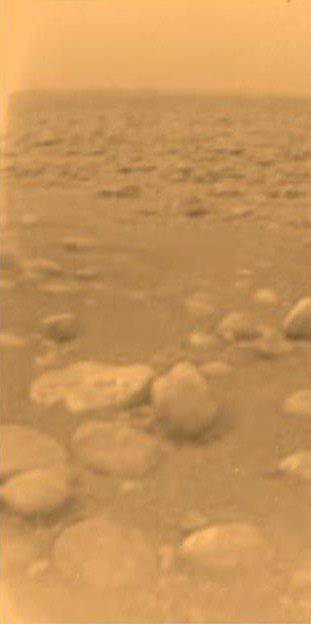
Huygens landed on the coast of the methane ocean, plunging into the sand and liquid methane mud. The brave scout for four hours led a report from this terrible world - until the Cassini repeater disappeared over the horizon. During this time, he managed to transfer 474 megabytes of information, including the sound of wind on Titan. Exclusive sound recording specifically for readers of "Military Review":
Aerial photography clearly showed how methane rivers flow, and in the ocean, ice from liquefied ammonia floats from liquefied natural gas in the ocean. In the orange gloom ice mountains are barely visible; the apocalyptic picture is complemented by the incessant black methane shower.
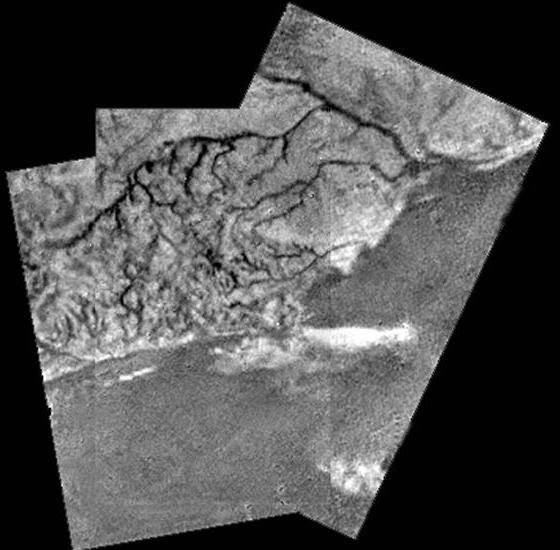
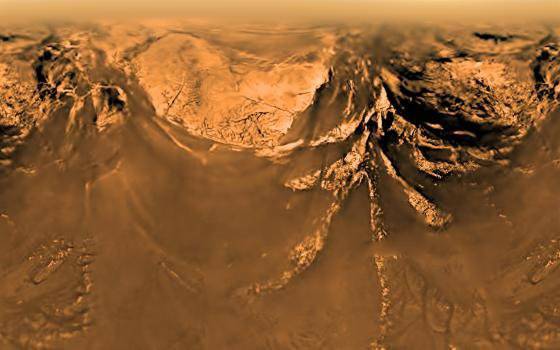
But NASA and ESA scientists would gladly return there again. The only thing that scares them is not methane rain, but the cost of the project. Damn it, for the sake of such pictures, I personally am ready to invest part of my funds. And what do they think about this, dear readers?
While our ships are plying the Bolshoi Theater ...
... the Japanese interplanetary station "Hayabusa" (Jap. Peregrine Falcon) made a landing with the acquisition of soil on the Itokawa asteroid. Three times the device approached the surface of a small celestial body (the transverse size is about 500 meters) and, every time, it broke itself. In the end, the motor installation failed, and soil delivery to the Earth became problematic. But the cunning Japanese did not lose, because in space nothing is simply lost. Three years later, in 2009, when the disoriented Hayabusa took a favorable position in relation to Earth, the specialists were able to restart the ion engine, and the capsule with the soil samples of the Itokawa asteroid was successfully delivered to the home planet. Instead, an aluminum plate with data on the planet Earth and on that memorable landing was left on the asteroid. I'm afraid aliens can not make out anything in Japanese characters.
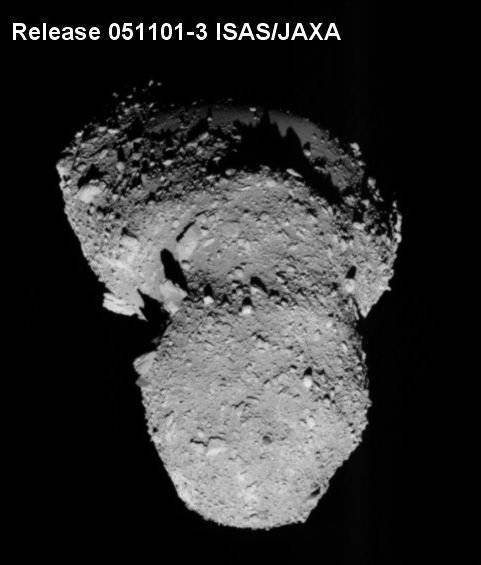
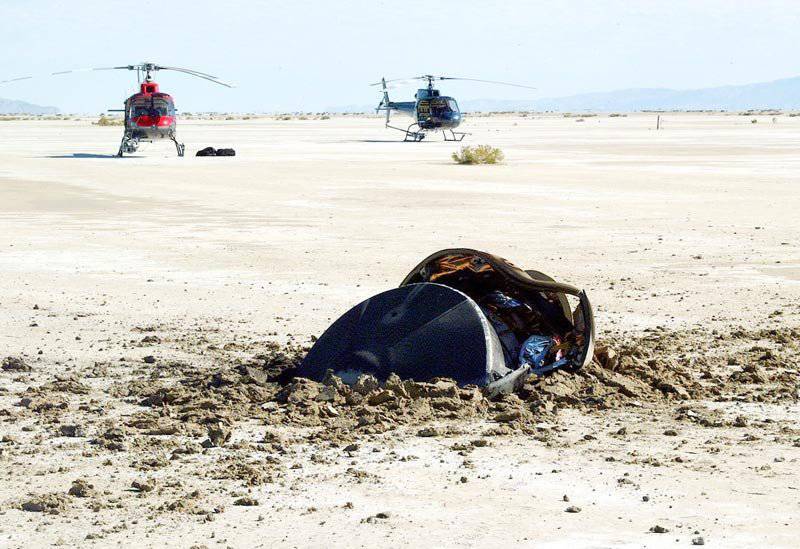
One of the points of the scientific program “Hayabusa” was the study of an asteroid using the miracle of Japanese robotics - a miniature MINERVA probe with a mass of just 519 grams, equipped with three such small cameras. The Japanese suffered a setback - after separation, the probe disappeared somewhere. However, it is clear where: flew into outer space after an unsuccessful rebound. The gravity of the Itokawa asteroid is too weak to hold a body of this size. In all this stories One detail attracts me: the cost of the MINERVA miniature probe was 10 million dollars. Maybe we should offer our services to the Japanese - even in Skolkovo, such a device, assembled from a mobile phone, would cost twice as cheap.
And Mars will bloom apple trees ...
- How's the sun? We will burn there.
- Do you think we have fools sitting here in the Politburo? Fly at night!
The human civilization of the 50 years of the space age was able to visit the 5 surfaces of celestial bodies: the Moon, Venus, Mars, Titan, and the asteroid Itokawa, plus the Galileo probe, which had burned down in the upper atmosphere of Jupiter. And every time a far from cordial welcome awaited us: the dead and dusty Moon, the extremely red-hot Venus, the deadly cold and the orange darkness on Titan. We do not even want to think about a possible landing on the surface of ghastly giant planets - it is still unknown whether they even have a solid surface. A person cannot even come close to Jupiter - while flying through the radiation belts of a giant planet, the Galileo spacecraft received 25 lethal doses of radiation for humans. In principle, in space there are generally few places suitable for landing even automatic vehicles.
The only celestial body that can be more or less suitable for humans can only be Mars - it is no coincidence that American probes frequently visit it: 11 expeditions from the 1996 of the year. Mars has an adequate temperature range: from - 153 ° C in winter to + 20 ° C in summer at the equator. The wind speed never exceeds several tens of meters per second (for comparison: clouds in the atmosphere of Saturn move at a speed of 500 m / s). There is no seismic activity - the planet died many years ago. Obtained indirect evidence of water ice. Those. There are all necessary conditions for life.
The only problem becomes too thin atmosphere - corresponds to the Earth's stratosphere at an altitude of 40 km. A walk on the surface of Mars without a space suit will lead to instant death. Moreover, 95% of the atmosphere consists of carbon dioxide, oxygen is almost absent. As they say, thanks and on it.
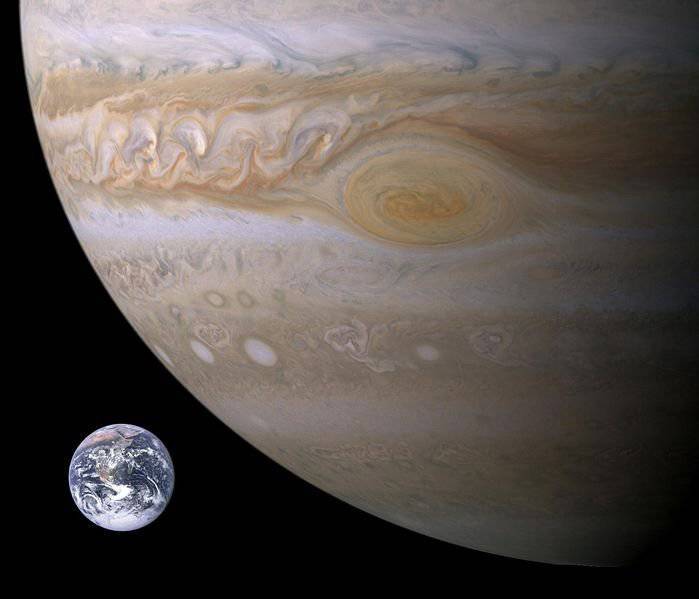
In the outer region of the solar system, beyond the orbit of Mars, there’s really nothing to count on - 4 is a terrible gas giant and an unknown Pluto, lost on the outskirts of the Solar System (we still don’t even have an image of this planet; in 2015, in the vicinity of Pluto there will be a probe “New horizons”, and then, perhaps, we will learn a lot of interesting things).
The only ones who may be of interest to humans are the satellites of the giant planets. Four "Galilean" satellites, Titan, the satellite of Neptune Triton ... Among them are truly unique samples, for example, another hellish place in the solar system - the satellite of Jupiter Io. Jupiter's mighty gravity swings Io in such a way that his 400 volcanoes continuously erupt lava flows, and the atmosphere is filled with sulfur dioxide.
At the same time, another satellite of Jupiter - Europe - is one of the main contenders for the existence of extraterrestrial life. Scientists believe that under 100 km an icy crust hides a huge warm ocean, heated by internal sources. It is a pity that the bold Jupiter Icy Moon expedition was postponed by NASA indefinitely - it would be very interesting to drill the ice and find out what is hiding inside Europe.
Still, you need to be very careful about the calls of Tsiolkovsky to quickly leave the earth's cradle and settle in the vastness of the Cosmos. As it turned out, it is cold there and nobody is waiting for us there.
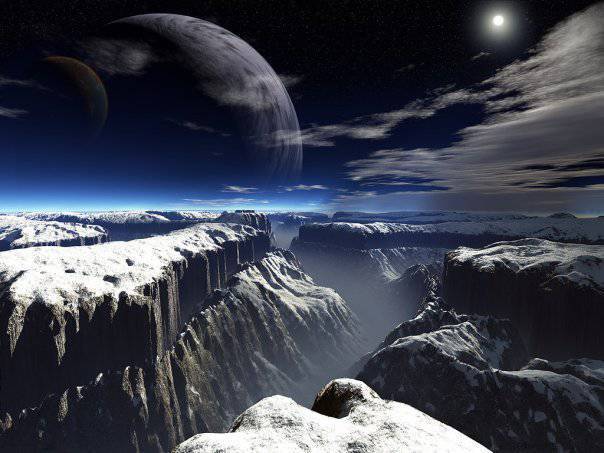
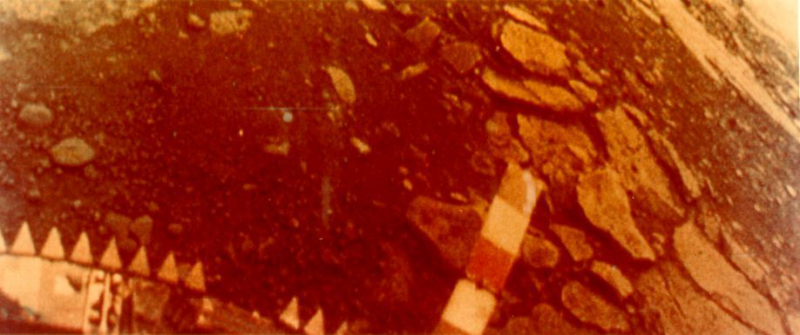
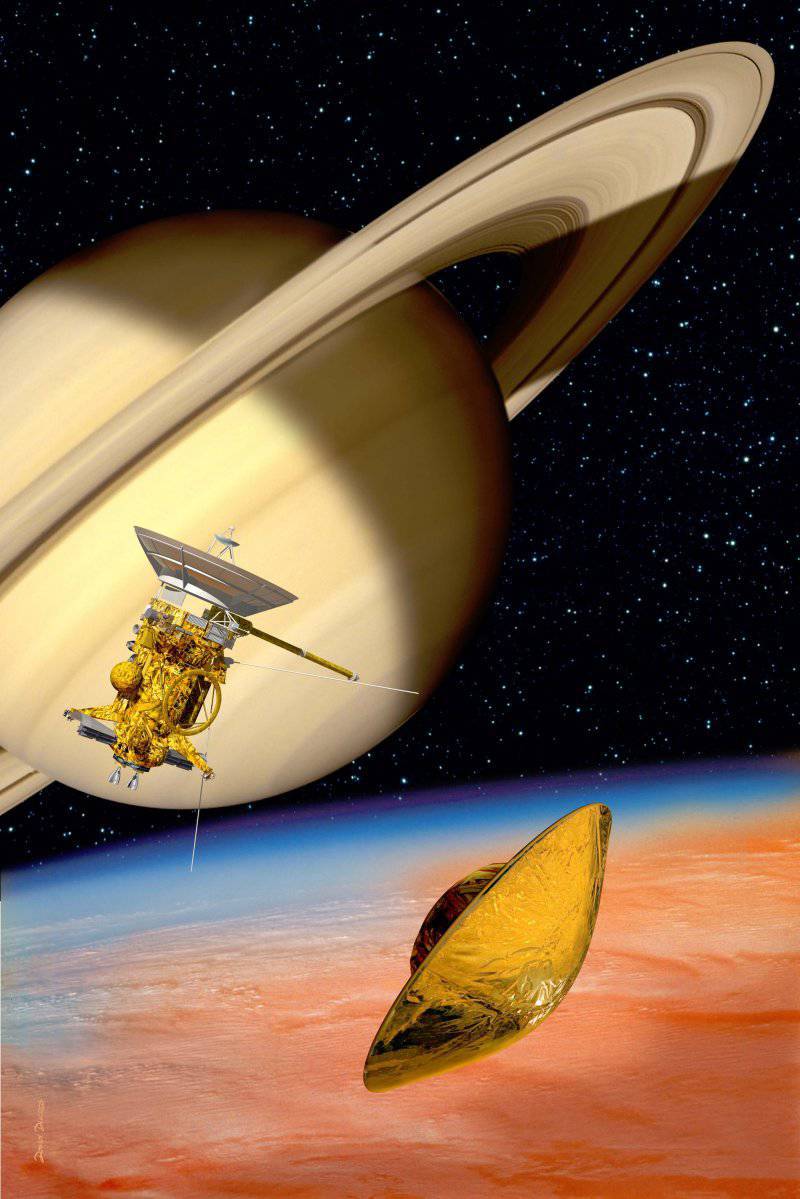
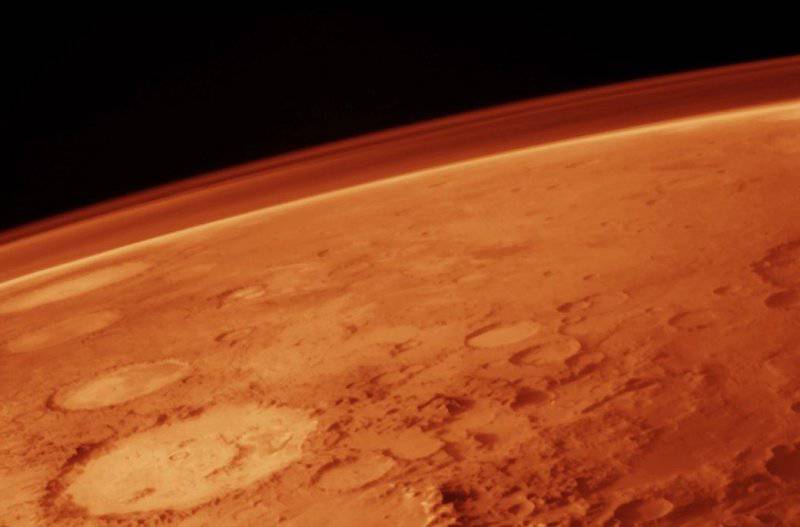
Information